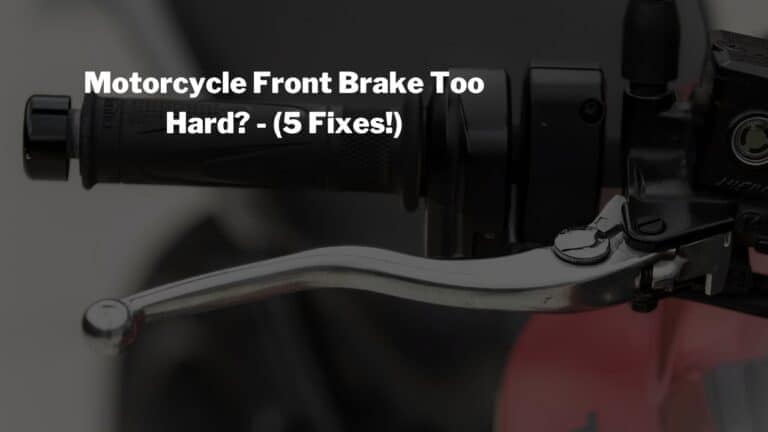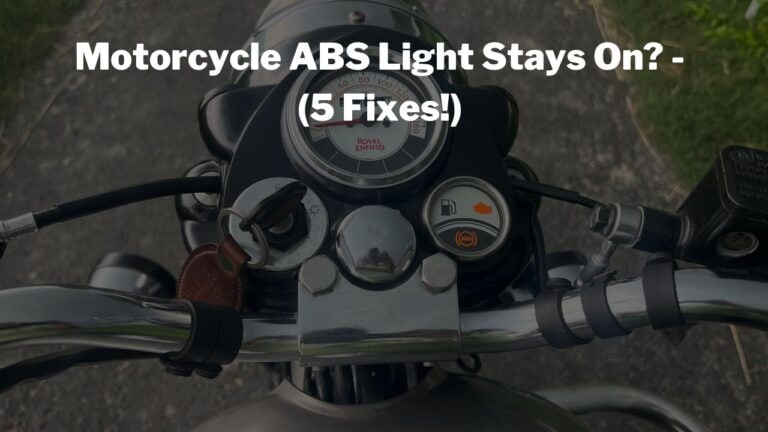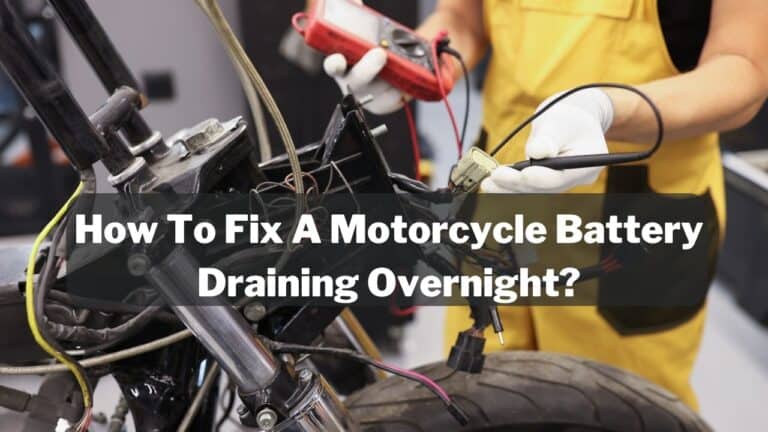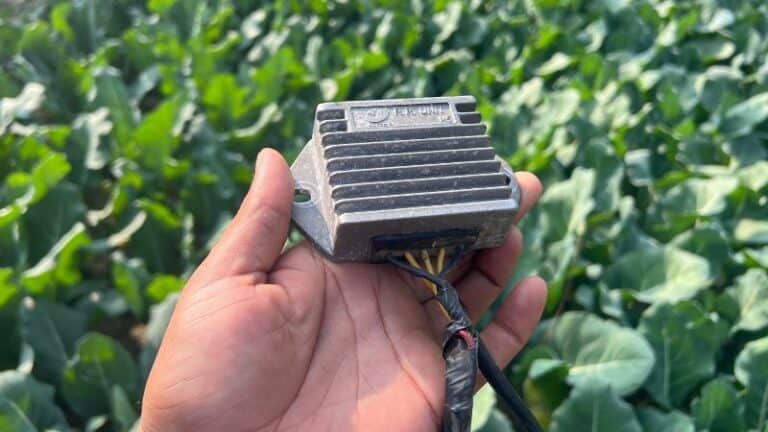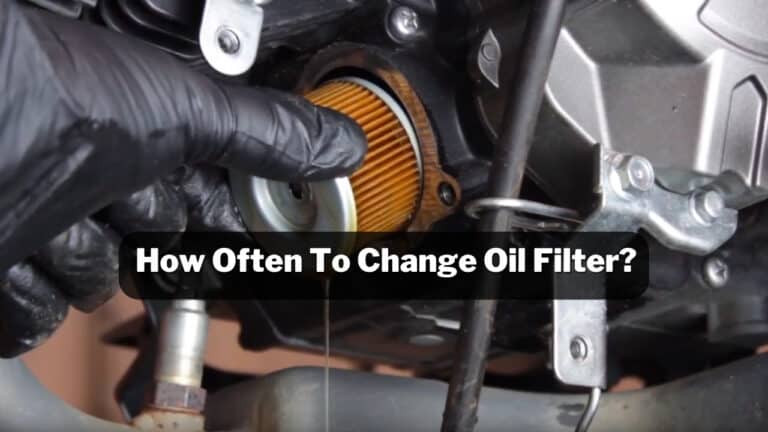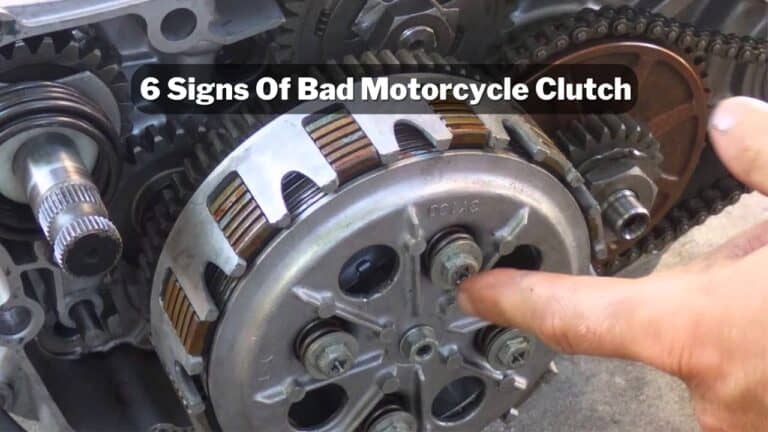24 Things to Check Before and After Servicing a Motorcycle
A motorcycle should be regularly serviced for better performance and a smoother riding experience.
However, many enthusiasts prefer to service their motorcycles at home but don’t know what to check before and after servicing a motorcycle.
I’m Kevin, a mechanical engineer and motorcycle enthusiast. I prefer to service my motorcycle at home instead of taking it to a service center. It definitely saves money, but above that, it’s my hobby, and I love it.
You should know what to inspect if you’re also thinking of servicing your motorcycle at home. Also, you should know what to check after servicing a motorcycle, even if a mechanic services it.
I have prepared the ultimate pre and post-service motorcycle checklists in this guide. I’m sure this will be helpful if you’re doing it by yourself or getting it done by a mechanic.
So, what to check after servicing a motorcycle? After servicing, take the motorcycle on a short ride and ensure that the clutch wire isn’t too tight or loose, gear shifting is smoother, the exhaust is not backfiring, engine oil isn’t leaking, electrical switches are functioning properly, there’s no check engine light, tire pressure is in recommended levels, and brakes are working properly.
These are some basic things you must check after every motorcycle service. If your motorcycle fails the above tests, it’ll affect your overall riding experience. You should rectify the issues and fix them immediately.
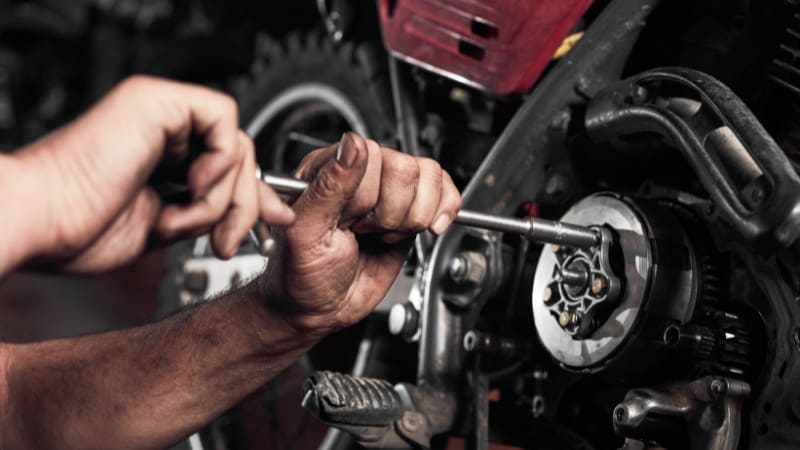
Table of Contents
- 1 15 Motorcycle Maintenance Service Checklist
- 1.1 1. Replace Engine Oil
- 1.2 2. Replace Oil Filter
- 1.3 3. Replace Air Filter
- 1.4 4. Clean and Lubricate the Chain
- 1.5 5. Adjust the Clutch Wire Tension
- 1.6 6. Check the Electrical System
- 1.7 7. Inspect Tire Pressure
- 1.8 8. Clean Radiator
- 1.9 9. Inspect Brake Pads
- 1.10 10. Inspect Spark Plug
- 1.11 11. Inspect the Suspension
- 1.12 12. Inspect Wheels
- 1.13 13. Check Sidestand Sensor
- 1.14 14. Check Battery Health
- 1.15 15. Tighten all Nuts
- 2 The Ultimate Post-Service Motorcycle Checklist
- 3 Conclusion
15 Motorcycle Maintenance Service Checklist
If you’re servicing a motorcycle, don’t skip this paragraph. Here I have provided a motorcycle servicing checklist that everyone should follow while servicing any motorcycle.
1. Replace Engine Oil
The purpose of engine oil is to keep the moving parts well-lubricated and prevent them from overheating. After riding several miles, the engine oil loses its viscous property, resulting in faster wear.
So, the first thing you should do when servicing a motorcycle is to change the engine oil. Read the manufacturer’s manual to know what type of oil should be used.
Click here to read my other guide on motorcycle engine oil change intervals.
2. Replace Oil Filter
An oil filter is installed to keep the motor oil clean. The moving parts wear due to continuous rubbing, and these metal chips contaminate the engine oil.
The oil filter collects those metal chips and cleans the engine oil. Over time, oil filters get clogged and must be replaced for engine longevity.
So, you must replace the oil filter while changing the engine oil. I have published a detailed guide on oil filter change intervals.
3. Replace Air Filter
An air filter is the nose of your motorcycle engine. It supplies clean air into the engine cylinder for fuel combustion. But, over time, dust and debris clog the pores of the air filter, which prevents the air supply.
As a result, your motorcycle runs rich and generates less power. The motorcycle’s air filter should be cleaned with compressed air every 3,000 to 5,000 miles and replaced after 10,000 to 12,000 miles or every 12 months.
I have written an article on air filter replacement for better engine performance. Click here to read that guide.
4. Clean and Lubricate the Chain
The chain and sprocket are integral parts of the transmission system. It transfers power from the gear shaft to the motorcycle’s rear wheel.
The chain and sprocket should be well-maintained for smoother power transfer. A dry and dirty chain makes an irritating noise and affects the riding experience.
So, while servicing your motorcycle at home, don’t forget to clean and lubricate the chain drive. You can use chain cleaner spray and brush to clean the chain. After cleaning, apply chain lubricant for better results.
Click here to buy the Motul chain maintenance kit from Amazon.
5. Adjust the Clutch Wire Tension
Appropriate tension should be in the clutch wire for better engagement and disengagement of clutch plates. Over time, the clutch wire expands, which disturbs the gear-shifting smoothnesses.
So, don’t forget to adjust the clutch wire tension on every service. If your motorcycle manufacturer has provided a hydraulic clutch system, check the clutch oil level and top-up if required.
6. Check the Electrical System
You should check all the electrical systems and ensure all lights function properly. Also, clean the battery terminals while servicing your motorcycle at home.
7. Inspect Tire Pressure
The tire pressure affects the motorcycle’s fuel economy and top speed. So, you must check both (front and rear) tire pressure and ensure it’s between the manufacturer’s recommended levels.
- Front tire pressure: 32 to 35 Psi
- Rear tire pressure: 40 to 42 Psi
8. Clean Radiator
Over time, dust and debris accumulate on the radiator if your motorcycle engine is water-cooled. While servicing the motorcycle, don’t forget to clean the radiator. Otherwise, you’ll face engine overheating and quick oil burn issues.
9. Inspect Brake Pads
You go over 150 mph because you know that the brake system can stop your motorcycle whenever needed.
That’s why inspecting the brake pads and oil level while servicing your motorcycle is important.
Replace the brake pads in case of excess wear and top-up the oil reservoir if the level is below the recommended value.
10. Inspect Spark Plug
A spark plug ignites the compressed air-fuel mixture into the combustion chamber. The spark plug should generate a powerful spark in a fraction of a second.
But carbon fouling on the spark plug tip disturbs the spark generation timing, resulting in engine power loss, reduced mileage, and exhaust backfiring.
So, you must inspect your spark plug and clean the carbon fouling when servicing a motorcycle.
11. Inspect the Suspension
So, you’ve inspected all the components that affect your engine performance. Now, it’s time to move on to other components that affect your riding experience.
A suspension system on a motorcycle helps with better control and handling on gravel roads or braking. You must inspect the front and rear suspension for leakage. If required, replace the suspension system.
12. Inspect Wheels
If one side of the tire has more wear than the other, it indicates your wheel is tilted and needs alignment. So, align your motorcycle wheel while servicing.
13. Check Sidestand Sensor
All modern motorcycles come with a side stand sensor. Your motorcycle engine will not start or move forward if the side stand is down. So, you should inspect the side stand sensor and replace it if it’s faulty.
14. Check Battery Health
An AGM (lead-acid) battery powers all electrical appliances on your motorcycle. It lasts for 2 to 3 years, depending on several factors. If the motorcycle battery drains overnight or fails to start the engine, replace it immediately.
15. Tighten all Nuts
Loose nuts and screws create noise. So, don’t forget to tighten all the nuts and screws after servicing the motorcycle.
The Ultimate Post-Service Motorcycle Checklist
If you’re still reading this article, it means you’re a true motorcycle enthusiast. I have prepared some ultimate checkpoints you should perform after a motorcycle service (whether done by a professional mechanic or you).

1. Short Test Ride
Every professional mechanic goes for a short ride after servicing a motorcycle. During this ride, he checks various things the customer reported before the service. You can also take your motorcycle on a short ride to feel the difference.
2. Clutch Wire Tension
The clutch is the most used component on a motorcycle. Over time, the clutch wire wears and expands due to regular use. Don’t forget to check clutch wire tension when you’re servicing a motorcycle.
If it’s loose or tight, please adjust its tension or ask your mechanic to do so. This will ensure clutch plates’ proper engagement and disengagement while gear shifting.
3. Gear Shifting
All modern motorcycles use a synchromesh gearbox that ensures a smoother gear-shifting experience. Due to excess engine oil or a bad clutch system, the motorcycle makes a clicky sound during gear shifting, or you notice hard shifting.
So, you should inspect the gear shifting after every motorcycle service. Ensure you won’t face hard shifting or difficulty putting into neutral.
4. Brakes
The brake is an essential component that controls the vehicle’s overall speed. I call it a life-saving device, and it should function properly. So, inspecting the brake system after serving the motorcycle is essential.
You should check your motorcycle brake pads, fluid level, and hydraulic pipe leakage. Replace the brake pads, hydraulic pipe, and top-up brake fluid if it’s below the required level.
All motorcycles use DOT3 and DOT4 brake fluid for effective braking. So, check the user manual to know what brake fluid your motorcycle manufacturer recommends.
5. Exhaust Sound
Your motorcycle exhaust tells a lot about the engine’s running condition. If your motorcycle exhaust is backfiring, smoking, or louder than usual, it indicates your engine is running too rich.
It can be fixed by adjusting the fuel supply and carburetor tuning. I have already published a detailed guide on exhaust backfiring and how to fix it.
6. Chain & Sprocket
The chain and sprocket are important parts of the transmission system. It’s responsible for transferring power to your rear wheel. Check the chain tension and ensure it meets the manufacturer’s recommended specifications.
Your motorcycle chain drive should be clean and well-lubricated for a smoother riding experience.
After servicing, you should check your motorcycle chain and sprocket. If the rollers between the chain link are cracked, or sprocket teeth are worn, replace them.
7. Suspension
A well-maintained suspension system ensures a smoother and more controlled riding experience.
It absorbs the shock due to bad road conditions, reduces vibrations, and promotes the comfort and handling of your motorcycle.
If your motorcycle’s front or rear suspensions leak or make noise, it should be replaced immediately.
8. Check Engine Light
Modern motorcycles are equipped with several sensors that monitor the engine’s performance.
These sensors collect data and send it to the motorcycle ECU, and your ECU adjusts the air-fuel ratio.
If any sensor detects faults, the ECU triggers a malfunction indicator lamp (MIL), aka Check Engine Light.
So, after servicing your motorcycle, look at the Check Engine Light. It should turn off when your motorcycle is running. If it doesn’t go off, it means your ECU has detected an error.
You can scan your ECU to find the error code. I’m using a wireless OBD2 scan tool to diagnose the trouble code. It connects with my iPhone via Bluetooth and detects the trouble code.
Click here to buy a wireless OBD2 scanner from Amazon.
9. Tire Pressure
Don’t forget to check the tire pressure after servicing your motorcycle. The pressure should be between the recommended levels by your motorcycle manufacturer.
Generally, the front tire pressure should be between 32-35 Psi, and the rear tire pressure should be between 40-42 Psi.
Conclusion
Whether you’re servicing a motorcycle at home or servicing it by a mechanic, follow the above checklist for a smoother ride and engine longevity. I hope you enjoyed reading this guide. Share your valuable feedback in the comment box.
